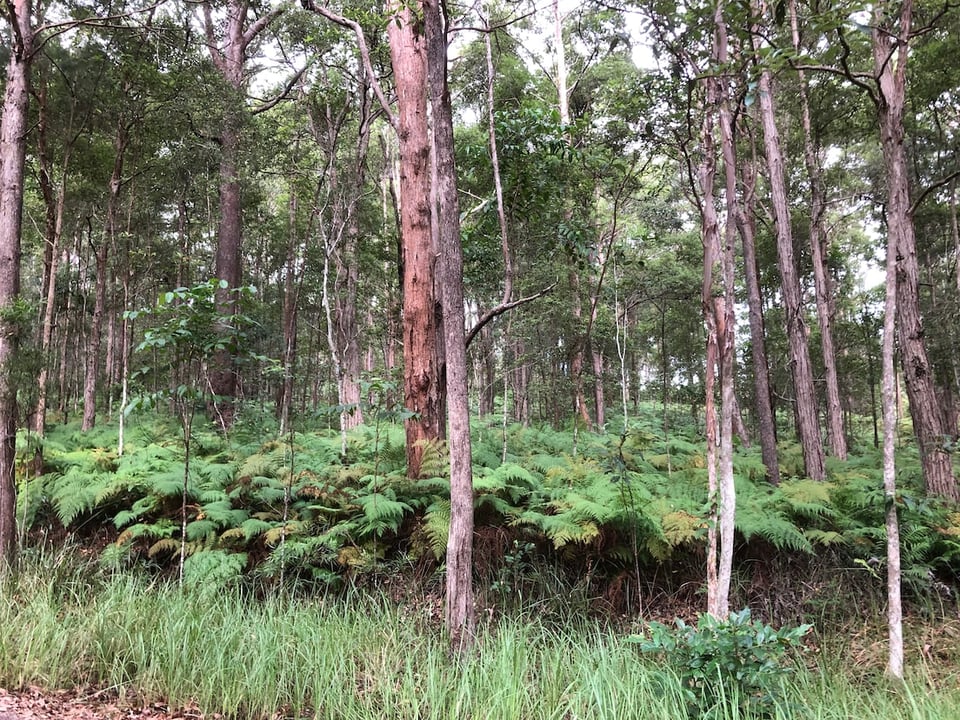Data visualisation, Typey Type changes, Data Sketches book, dev posts, sitting and clicking

Hi there,
Thanks again for signing up! It was probably so long ago that you have no idea what this newsletter is about. Let me fill in some blanks.
Once upon a time I was a regular and consistent newsletter author, writing about web design, stenography, development, books, and winning at life. Perhaps you read my book on UI patterns and design systems. Maybe you've practiced typing with Typey Type for Stenographers. It's possible I taught you some data visualisation. You might even have seen me speak at a conference or a meetup.
But then the pandemic happened and my life changed a bit. And now it's been donkey's years since I've written. It also happened that my career as a multidisciplinary coder/designer shifted further away from design and deeper into development, so I've been less sure what to write here.
Today I've decided to just get on with it and write about whatever I've been tinkering with, even if it's a wild mix of topics. Just skip over whichever bits aren't your jam. In this newsletter, I'm going to cover:
- Design: a data visualisation of snake sightings
- Steno: a heroic story of tech and steno
- Steno: Typey Type's new features, games, lessons, and more
- Book: a review of Data Sketches
- Development: a story of a large rewrite to build a TypeScript Node.js CLI for steno, and D3 how-to posts
- Development: drawing SVG rope, React Testing guide, better research
- Winning: prolonged sitting, better clicking
Warm wishes,
Di
Design
Data visualisation of snake sightings
I recently made this data visualisation scrolling story about my snake sightings. It has fun facts, silly animations, and a few happy snaps (only if you want to see them!):
🐍 Living among snakes in Queensland, Australia
And I'm proud to say my ridiculous story made the Information is Beautiful awards 2023 longlist!

I hope the silly, wiggly sneks amuse you!
Steno
Heroic Plover steno story
For the tech + steno fans, check out this amazing story where the Plover community (especially Jen) saved the day!
Time to preserve those floppy disks! by The Bloop Museum!
Steno
Typey Type changes
As this newsletter is terribly overdue, I'm going to summarise everything that's changed on Typey Type since I last wrote…
New features!
- Custom lesson generator: Select all the options you want, hit "Build lesson", check out the preview of that material and hit "Start generated lesson".
- Show other stroke hints setting: In lessons you can now check the "Show other stroke hints" setting to show alternative stroke hints from personal and Plover dictionaries. This lets you see other ways to write a word, such as longer, multi-stroke, phonetic options. Try it out! Multi-syllable words with multiple strokes lesson with other strokes shown
- New steno layouts in lesson settings: Inner thumbers (TinyMod, Steko, etc.), Outer thumbers (Uni, Georgi, etc.), and Brazilian Portuguese
- New "Customise lesson" option: From any Typey Type lesson, you can now "Customise lesson" to edit that lesson's material and stroke hints on the custom lesson setup page.
- Dark mode! By popular demand, Typey Type now has a dark theme! It works automatically if your computer is set to dark mode. Here's how to set dark mode for macOS and change colors to dark for Windows.
- Punctuation text descriptions: Thanks to Yann over on GitHub, I've added a new Typey Type setting to show text descriptions for punctuation symbols. This can help with figuring out hard-to-distinguish symbols like different quotation marks, as well as learning fancy names for different punctuation symbols.
- Sort lessons by word length: you can now sort lessons by longest words first or shortest words first.
- Set "Upcoming words" to "multiline" to A) see the first three lines of content, B) scroll the entire lesson, and C) let your eyes move across the page as the lesson progresses instead of fixing your eyes in one place and having the words move. I gotta tell ya, this feature was hard to build while supporting Plover's space before and space after behaviours with Typey Type highlighting.
- Set "Upcoming words" to "hidden" so you can only see one word at a time to practice reacting to a word instead of thinking ahead.
- "Download reformatted progress file" on the progress page to will update the spacing in your progress file to match your latest spacing setting if you've changed it.
- Typey Type shortcuts: like restart lesson, revise lesson, and jump to the next lesson.
- Change diagram size setting
- Upcoming phrases underline Typey Type will now show a dotted underline for an upcoming multi-word brief (when using the single-line layout). This helps a lot in phrasing brief lessons when words from two-word brief lessons show up in your revision efforts.
- Lesson length preview to tell you how long a lesson might take based on how many words it has and the current Metronome Beats Per Minute setting. If it's longer than you'd like, you can adjust settings like "Word limit" to make it more manageable.
- The Lessons index page now has categories, a table of contents, and linkable heading (so you could bookmark Aesop's Fables directly, for example).
- Related words: On the Lookup, you can see "Some related words", which you can then copy and paste into custom lessons if you like.
- Typey Type & steno Linktree page
New games!
- KAOES (keys) to help people get started with memorising the layout.
- SHUFL (shuffle) to practice writing short words or fingerspelling and arrowing about to delete and move letters.
- TPEUBGSZ (fixes) to learn and practice prefixes and suffixes.
- KPOES (compose). This is for open-ended typing so you can practice the skill of thinking of any random word and trying to write it. It could help you expand your steno vocabulary to match words you regularly use. If you can't think how to stroke a word, you can look it up on the same page.
- KHAERT (chatter) to practice writing conversational text and look up words. I made this before ChatGPT got popular and the standard of quality of chat bots sky rocketed so uhh don't get your hopes up, Shazza is not that clever.
New lessons!
- Top Nouns
- Top Adjectives
- Top Adverbs
- Greek alphabet as words
- Fingerspelling pangram: The quick brown fox jumps over the lazy dog
- Fingerspelling pangram: Waltz, bad nymph, for quick jigs vex
- Fingerspelling pangram: Glib jocks quiz nymph to vex dwarf
- Fingerspelling pangram: Sphinx of black quartz, judge my vow
- Fingerspelling pangram: How quickly daft jumping zebras vex
- Fingerspelling pangram: The five boxing wizards jump quickly
- Fingerspelling pangram: Jackdaws love my big sphinx of quartz
- Fingerspelling pangram: Pack my box with five dozen liquor jugs
- Fingerspelling pangram: Mr Jock, TV quiz PhD, bags few lynx
New lesson overviews…
- Top 100 words overview
- Multi-syllable words with compound clusters overview
- Multi-syllable words with briefs overview
I've made lots of updates to dictionaries and suggested hints, including merging lots of contributions from Paul Fioravanti. Paul has an awesome collection of dictionaries and writes about steno. You should subscribe to his newsletter.
I've also shared an Observable notebook for checking dictionaries contain valid Plover steno entries.
New static lesson generator CLI! I completed a huge, behind-the-scenes project to overhaul how lessons are built. The final piece of Typey Type source code is now publicly available.
Books, Links, and News
Book review
Data Sketches by Nadieh Bremer and Shirley Wu
This is maybe my new favourite tech book ever?
The authors describe early on how it took years for them to find a publisher willing to make the book they intended. In particular, it's part tech, part design, and part coffee table book—large and beautiful. Not many publishers want to go for that.
For me, this is perfect. I love poring over the technical implementation details, gazing at the stunning results, and peaking at the details of the behind-the-scenes processes, which in data viz can sometimes be far more involved and mundane than you expect. I appreciated hearing about the reality of what these data viz legends do. Throughout the book, they outline the creative process, ideas they explored and sometimes discarded, approaches to storytelling, and lessons learned.
To give you a taste, here is a passage from one of Shirley Wu's sections:
When I start on a data visualization project, I always start with a curiosity, a topic I'm interested in-whether that's the Obamas' late-night talk show appearances, recurring themes in Hamilton the musical, Dance Dance Revolution, or summer blockbusters. I find that having that curiosity keeps me motivated and gives me direction when looking for datasets.
Once I have a curiosity, I start with a Google search. Sometimes I'm lucky, and I find a dataset that's already downloadable in JSON or CSV format (very rare). Oftentimes, I'll find a website where the data is in plain text on the page; in those instances, I can get the data with their API or by scraping the site. For scraping, I like using Node.js modules (mostly
httpto programmatically request the webpage), and for APIs, I've found that there's usually a corresponding Node.js package that does all the hard parts (like OAuth authentication for signing into a service) for me.If I can't piece the data together from resources online, then I have to manual gather and enter the dataset. It's tedious work, but I've learned (the hard way) that Excel makes the process so much easier. One time, I found the data | wanted in Image form, and was able to get the underlying raw data by just … asking the person who ran the website. It was amazing.
Development
Development
Here are some blog posts and notebooks I've written recently about the place:
- A Complete Rewrite: Stenography Lesson Generator in NodeJS
- Annotations using paths and markers in D3
- Morphing shapes into circles using D3
Here are some other, random things I've enjoyed:
- Draw SVG rope using JavaScript by Stanko, Muffin Man
- The Beginner's Guide to React Testing by Max Rozen
- Cultivating depth and stillness in research by Andy Matuschak
Winning
Winning at sitting and clicking
Mounting evidence suggests that prolonged sitting -- a staple of modern-day life -- is hazardous to your health, even if you exercise regularly. Based on these findings, doctors advise all adults to sit less and move more. … just five minutes of walking every half hour during periods of prolonged sitting can offset some of the most harmful effects
— Rx for prolonged sitting: A five-minute stroll every half hour -- ScienceDaily
I recently learned that in many places on many devices, you can hold ⌥ (or alt) to select text inside links without activating the link and that's neat. I needed this.
You just read issue #4 of Di's Newsletter. You can also browse the full archives of this newsletter.